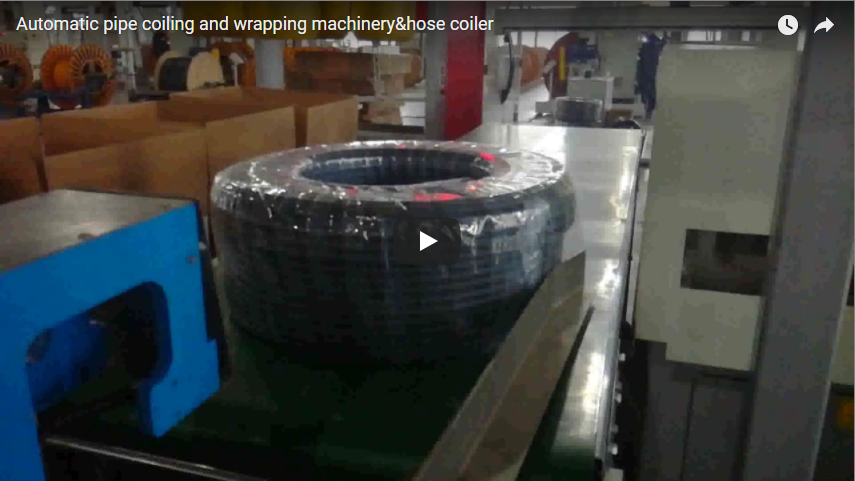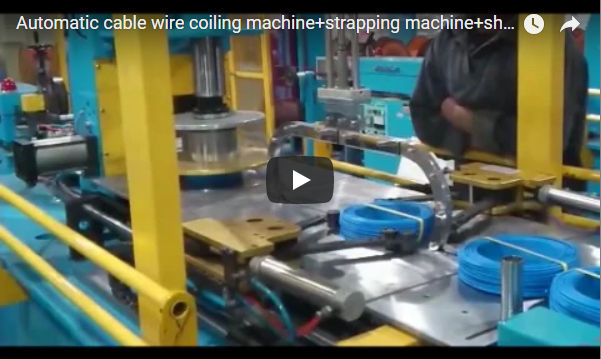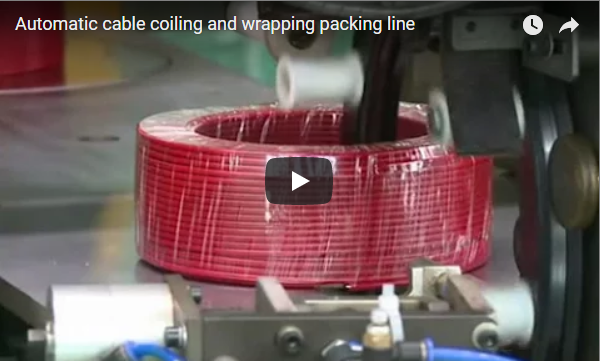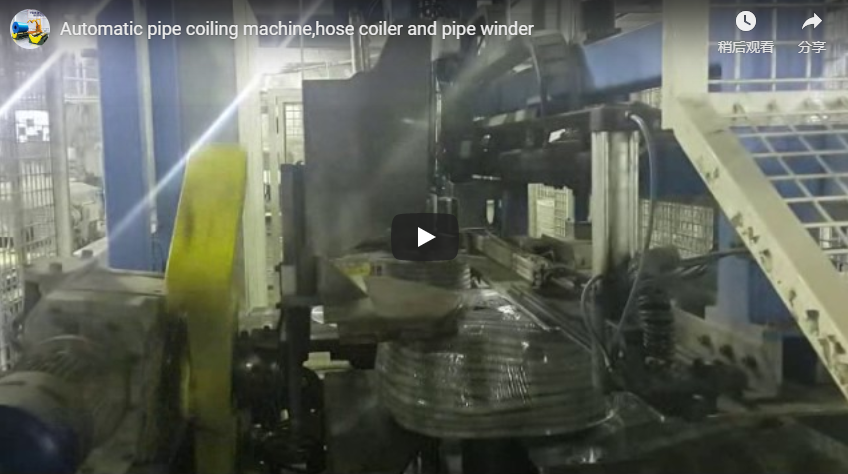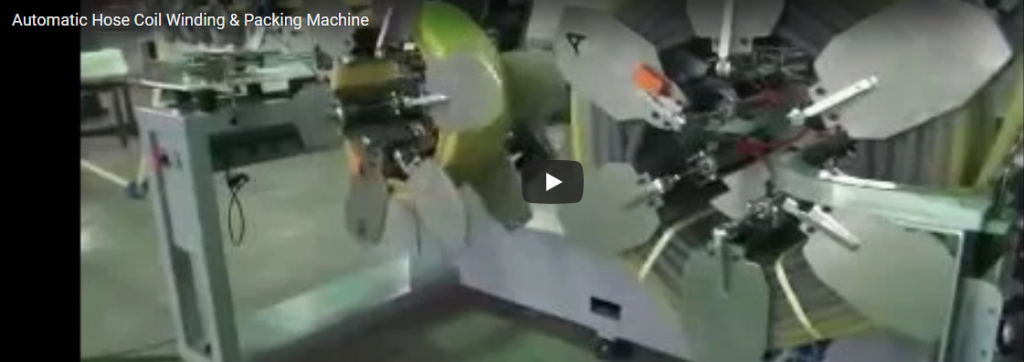Enhancing Production Efficiency: Automated Pipe Coil Winding and Strapping Systems
In modern manufacturing, particularly within the pipe extrusion sector for industries like construction, telecommunications, and agriculture, optimizing downstream processes is critical for maintaining competitiveness. Efficient handling, coiling, and securing of pipes directly impact throughput, product quality, logistical costs, and ultimately, profitability. This article delves into the technological advancements and operational benefits of automated pipe coil winding and strapping lines, referencing industry data and technological trends highlighted in technical papers and patents.
The Evolution from Manual to Automated Pipe Handling
Historically, pipe coiling and packaging often involved significant manual labor. While manual processes offer initial flexibility, especially for low-volume or highly customized production runs, they inherently suffer from limitations:
- Inconsistent Coil Quality: Manual winding can lead to variations in coil density, shape, and tension, potentially causing issues during storage, transport, or unwinding.
- Lower Throughput: The speed of manual coiling and strapping is a major bottleneck, limiting overall production line capacity.
- Ergonomic Challenges and Safety Risks: Handling long lengths of pipe and applying strapping manually can be physically demanding and pose risks of repetitive strain injuries.
- Higher Long-Term Labor Costs: In medium to high-volume production environments, ongoing labor costs can significantly outweigh the initial investment in automation.
The transition towards automation addresses these challenges directly, aligning with the principles of modern industrial efficiency often discussed in publications like MM MaschinenMarkt.
Core Technology: Automated Pipe Coiling and Strapping Lines
Automated systems integrate several key technologies to provide a seamless and efficient process from pipe extrusion to final packaged coil.
Precision Coiling Unit
At the heart of the system lies the coiling machine. Modern designs incorporate features supported by extensive R&D and patent filings (e.g., focusing on tension control mechanisms and coil formation):
- Servo-Driven Winding: Ensures precise speed control and consistent layering of the pipe.
- Adjustable Tension Control: Maintains optimal tension throughout the winding process, crucial for different pipe materials (PE, PEX, corrugated) and wall thicknesses, preventing deformation.
- Variable Core Diameters: Accommodates different coiling requirements and standards.
- Accurate Length Measurement: Integrated encoders or laser measurement systems ensure precise coil lengths, minimizing material waste.
- Automated Cutters: Cleanly sever the pipe upon reaching the target length.
Automated Strapping Module
Once the coil reaches the desired size, it's typically transferred automatically to a strapping station. Key features include:
- Multiple Strap Application: Systems can apply a predetermined number of straps (e.g., 3 or 4) at precise locations for optimal coil stability. Research often points to the importance of strap placement for maintaining coil integrity during handling.
- Strap Material Compatibility: Designed to work efficiently with common industrial strapping materials like Polypropylene (PP) or Polyester (PET).
- Reliable Sealing Technology: Utilizes heat sealing or ultrasonic welding for secure and consistent strap joints.
- Automatic Strap Feeding and Tensioning: Reduces operator intervention and ensures uniform strap tension.
Integrated Control Systems
The entire line operates under a unified control system, typically PLC-based (Programmable Logic Controller):
- Human-Machine Interface (HMI): Touchscreen panels provide intuitive operation, parameter setting (coil dimensions, strap number, tension levels), diagnostics, and production data monitoring.
- Synchronization: Ensures seamless coordination between the extruder speed, coiler, cutter, and strapper.
- Industry 4.0 Readiness: Modern systems often feature connectivity options for integration with Manufacturing Execution Systems (MES) or Enterprise Resource Planning (ERP) software, enabling real-time data exchange, remote monitoring, and predictive maintenance capabilities, as frequently highlighted in industry reports on smart factories.
Operational Advantages and ROI
The adoption of automated pipe coiling and strapping lines delivers tangible benefits:
- Increased Throughput: Automation dramatically increases the speed of coiling and packaging, enabling manufacturers to keep pace with high-speed extrusion lines and meet demanding production schedules. Industry benchmarks often show a multi-fold increase in output compared to manual methods.
- Enhanced Product Quality & Consistency: Automated systems produce uniform, tightly wound, and securely strapped coils every time, reducing the risk of damage during transit and improving end-customer satisfaction.
- Labor Optimization and Improved Safety: Automating these repetitive and physically demanding tasks frees up personnel for higher-value activities and significantly reduces the risk of workplace injuries, contributing to a safer production environment.
- Reduced Material Waste: Precise length measurement and optimized strapping minimize giveaway of pipe material and consumables.
- Significant Long-Term Cost Savings: While requiring an initial capital investment, the reduction in labor costs, material waste, and potential quality issues leads to a compelling Return on Investment (ROI) for most medium-to-large scale producers.
Future Trends and Technological Advancements
The field continues to evolve, driven by demands for greater efficiency, flexibility, and sustainability:
- Robotics Integration: Increasingly, robotic arms are used for automated coil transfer, palletizing, and stretch wrapping, creating fully autonomous end-of-line packaging solutions.
- Enhanced Sensor Technology: Vision systems for quality inspection and advanced sensors for real-time process monitoring contribute to higher reliability and reduced downtime.
- Greater Flexibility: Machines are being designed to handle a wider range of pipe diameters, materials, and coil configurations with minimal changeover time, catering to diverse market needs.
- Sustainability: Focus on energy-efficient components (e.g., servo motors, optimized heating elements for strapping) and compatibility with recyclable or biodegradable strapping materials addresses growing environmental concerns.
Conclusion: Strategic Investment in Automation
In the competitive landscape of pipe manufacturing, the transition from manual packaging to automated systems like the automatic pipe coiling and strapping machine is no longer just an option, but a strategic necessity. These systems offer quantifiable improvements in efficiency, quality, safety, and cost-effectiveness. By leveraging advanced controls, reliable mechanics, and integration capabilities, manufacturers can optimize their downstream operations, enhance product presentation, and position themselves for sustained growth in demanding global markets. Embracing automation is key to unlocking higher productivity and maintaining a competitive edge.

